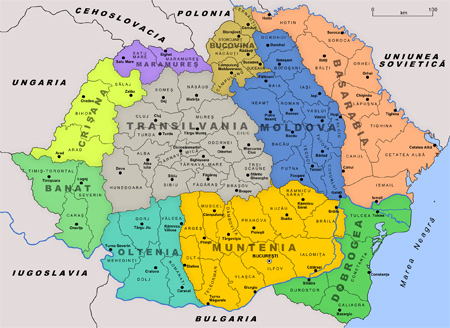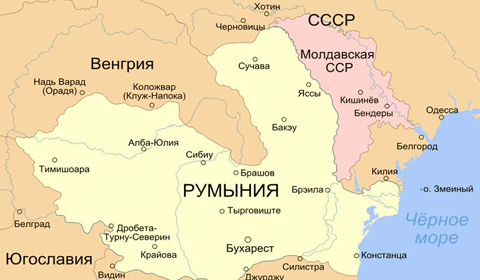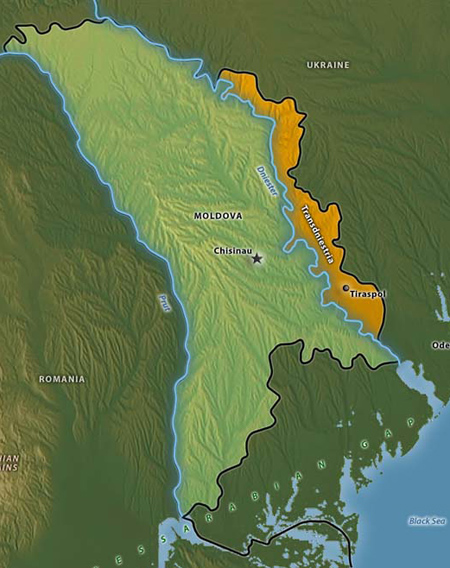| Currently, there are several theories about the origin of the name Moldova. One of them, says that its name comes from the river of the same name, in the valley which was formed the first nucleus of a new principality. According to medieval chronicles, the name of the river came from a dog named Prince of Maramures Dragos din trouble. During the reign of Dragos din Bede (1347-1348), Moldova did not exceed the area between the Carpathians and the Siret River on one side and the rivers of Moldova on the other. In 1426, the Moldavian Prince Alexandru cel Bun, using the plight of "Tserii Romynesht" expands the boundaries of ownership and conquers the city Kealia. In addition, during his reign the city Pokutsiya part of Poland and Moldova Romania receives from the land of the Danube to the sea. The peak of glory of the Moldovan state is associated with the rule of Stefan III (1457-1504), and Stephen the Great. He was a brilliant ruler, defended the Republic of Moldova from the collision with the Polish and Hungarian armies, the Crimean and Turkish Janissaries, played a major role in the history of the country. During the reign of Stephen the Great of Moldova became a maximum of a strong and authoritative country. At this time, no country has managed to capture Moldova. He participated in 48 battles, of which 47 and he won, so in honor of each victory, he built 47 churches. Among the successful rulers who followed after Stefan the Great had four: Petru Rares, Alexandru Lepushnyanu, Vasile Lupu, and Dimitrie Cantemir. In 1792 the Ottoman Empire was forced to cede the territory, which is now known as Transdniestria, the Russian Empire. After the Russian-Turkish war of 1806-1812, concluding a peace treaty in Bucharest in 1812, the Russian Empire, attached 3 "new" territory: the Turkish land Hawtin and Budjac, and territory between the Prut and Dniester, to be called a province of Bessarabia. In 1859, the Principality of Moldavia to Romania to join forming a unified state and selecting one ruler for the two kingdoms, represented by the Alexandru Ioan Cuza. December 2, 1917, "Sfatul Tserii, the legislature Chisinau declares Democratic Federative Moldavian Republic within the Soviet republics of Russia, and the same legislature, January 24, 1918 declaration of independence from Russia, and creates a new Moldavian Democratic Republic. March 27, 1918, the majority decision, the new Democratic Moldova united with Romania. Thus, united Bessarabia, Bukovina and Transylvania from the ancient kingdom.
As a result, the German-Soviet Pact Molotov - Ribbentrop Pact and the secret annex to the Protocol of 26 June 1940, the Soviet Union takes control, armed hostilities, Bessarabia. The result was a Moldavian Soviet Socialist Republic (MSSR).
In the late '80 's in Moldova began the national liberation movement. Romanian (officially known as Moldovan) has acquired the status of state / official language. August 31, 1989 Moldova switched from Cyrillic to Latin alphabet. August 27, 1991 Moldova gained independence and became a sovereign state, having its own flag (tricolor) and the national anthem. But independence was not supported by all. The standoff in the country, which led to a brief but bloody war that began in the time of capture Tiraspol separatists control over the territory of the left bank of the Dniester (except six villages where the locals resisted) and Bender, and proclaim a new country Dnestr Moldavian Republic. At present it is not recognized by any country in the world.
|
|


 History of the Republic of Moldova is an interweaving of events, attempts and failures, domination and triumph. Research archaeologists show that people lived here 7000 years BC There is much evidence that this area had been inhabited since the Paleolithic Age.
History of the Republic of Moldova is an interweaving of events, attempts and failures, domination and triumph. Research archaeologists show that people lived here 7000 years BC There is much evidence that this area had been inhabited since the Paleolithic Age.


